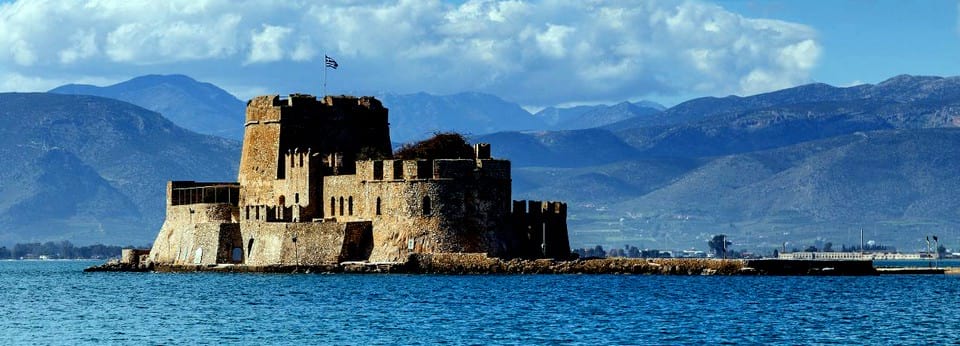
The area around Nafplion is known to have been inhabited since Neolithic times and from its earliest days the seaport was an active trading centre. Its position at the head of the gulf has meant that it has often been of great strategic importance and at various times its fortifications have been strengthened, the oldest of which are those of Acronauplia on the rocky peninsula next to the harbour where the remains of three separate castles can be seen today.
And towering over the town of Nafplion is the majestic castle of Palamid, the result of an extensive reconstruction project by the Venetians. This can be accessed via road or by climbing nearly a thousand steps up the side of the hill. At the end of the Greek War of Independence Nafplion became the first capital of modern Greece, a function it served until 1834.
Name
Over its history, the name of the city has changed several times and in the Classical period it was known as Nafplia (Ναυπλία in Greek). Under the Venetians it became Napoli di Romania (Byzantine Naples to distinguish it from the Italian Naples) while during Ottoman occupation it was called “yeni şehir”, the Turkish for “new city” (a translation of the Italian meaning of Napoli). During the nineteenth and twentieth centuries the terms Nafplion (Ναύπλιον) and Nafplio (Ναύπλιο) were both used and are still used interchangeably today along with the alternative English spellings of Nauplio and Nauplion. For simplicity, Nafplion will be used here.
Mythology
The city was originally said to have been named after Nauplius (the Navigator) who was the son of the Poseidon. Nauplius was also the father of Palamedes, a hero of the Trojan War, to whom various inventions have been ascribed including weights and measures, lighthouses and 11 letters of the Greek alphabet.
According to the second century traveller/geographer Pausanias, the first inhabitants of Nafplion were Egyptians, colonists brought to Greece by Danaus, the son of the Egyptian king Belus. The legend has it that Danaus left Egypt and sailed for Argos along with his fifty daughters.
Nafplion is also believed to have taken part in the Argonautic expedition and to have contributed soldiers to the Trojan War.
Early History
The area around Nafplion is known to have been inhabited since Neolithic times and there is evidence that from its earliest days it served as a port and trading centre.
In the Archaic and Classical periods the city was a stronghold although during the Second Messenian War it made the mistake of siding with the Spartans which angered Damokratis, the king of nearby Argos. The Argives subsequently destroyed Nafplion following which its surviving inhabitants were expelled and took up residence near Methoni. After this Nafplion was overshadowed by the more powerful city-state of Argos for which it served as a port.
In Roman times the city fell further into decline and by the time Pausanias visited in the second century it was completely deserted.
Byzantine Period
By the early middle ages Nafplion had become repopulated although was still of limited importance. In the 6th century AD, it consisted of the remains of the castle on the site now known as Acronauplia along with a small village. However in the 11th century it was fortified by the Byzantines to the extent that at the beginning of the 12th century its ruler, Leon Sgouros, was able to successfully defend the city against repeated attacks by the Crusaders until it was finally captured in 1212.
In 1388 the city was handed over to the Venetians who occupied it for nearly 150 years during which time it came under attack by the Ottomans as part of the Ottoman–Venetian War. Two major offensives were repelled, the first by Mehmed the Conqueror and a later one by Suleiman the Magnificent. But in1540 it finally fell to the Ottomans.
The Venetians recaptured Nafplion in 1685 and made it the capital of the Kingdom of the Morea (the old name for the Peloponnese). During this second period of Venetian rule the castle at Palamidi was extensively refortified with a series of interconnected bastions which made it the most impregnable fortress in Greece. At this time the Venetians also fortified the Bourtzi on the rocky islet in the harbour with the aim of providing protection against pirates and invaders by sea.
In 1715 despite its apparently invincible battlements, Nafplion was easily recaptured by the Ottomans as the Venetians had allocated a mere 80 troops to defend it. The city then remained in Turkish hands until the outbreak of the War of Independence over a century later.
The Greek War of Independence
At the beginning of the uprising, Nafplion became a major Ottoman stronghold but after being subject to a year long siege it was captured and for the rest of the war was the seat of the provisional Greek government.
In January 1828 as the war was coming to its end, the newly appointed first Head of State, Count Ioannis Kaodistrias, arrived in Nafplion (in fact this was the first time he had ever set foot on the Greek mainland). He proclaimed Nafplion as the capital of the modern Greek and used his connections as a former Russian Foreign Minister to lobby for loans for the new state and for favourable borders. However his decisions were not always welcomed by members of the Greek elite and politics at this time was often highly fractious.
In 1831 Kapodistrias was assassinated on the steps of the Ag Spyridon church in Nafplion by members of the Mavromichali clan after he had ordered the arrest and imprisonment of Petrobey Mavromichali one of its leading members. The next few months were a period of anarchy and in 1832 King Otto arrived to be head of state in the newly formed Kingdom of Greece. Two years later it was decided that the capital should be moved from Nafplion to Athens.
Click here for a short video on Nafplion by Philip Bekyros
Click here for information on Palamidi tickets, opening hours etc
Click here for a Google Map of Palamidi
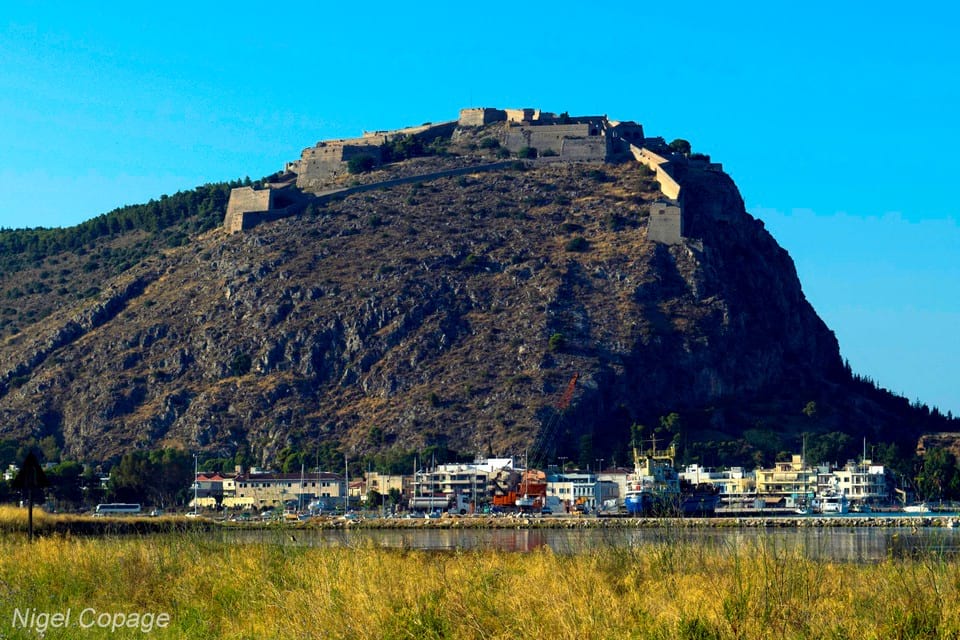 The fortress on Palamidi hill overlooking Nafplion
The fortress on Palamidi hill overlooking Nafplion
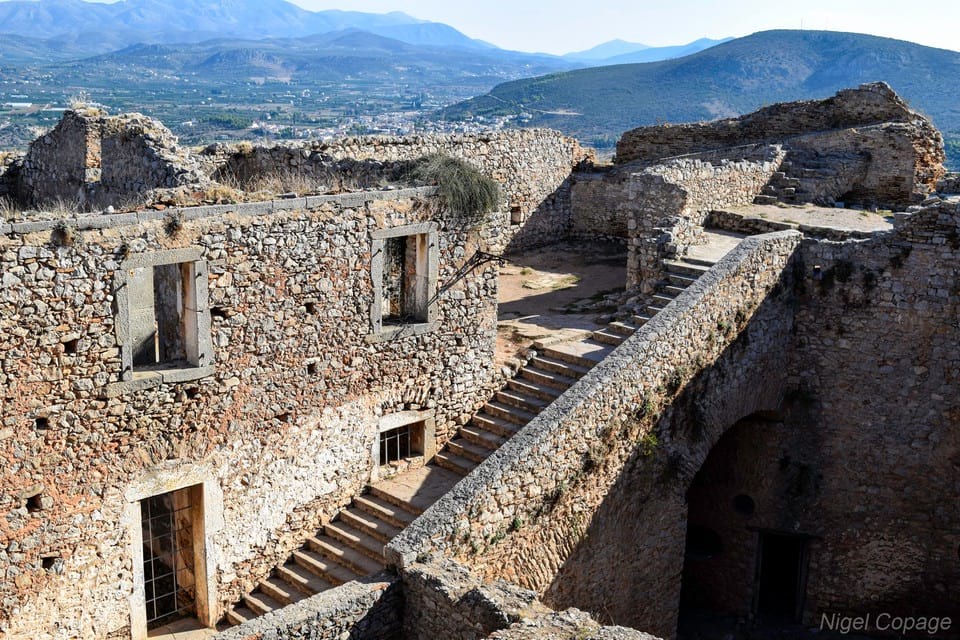 Palamidi
Palamidi
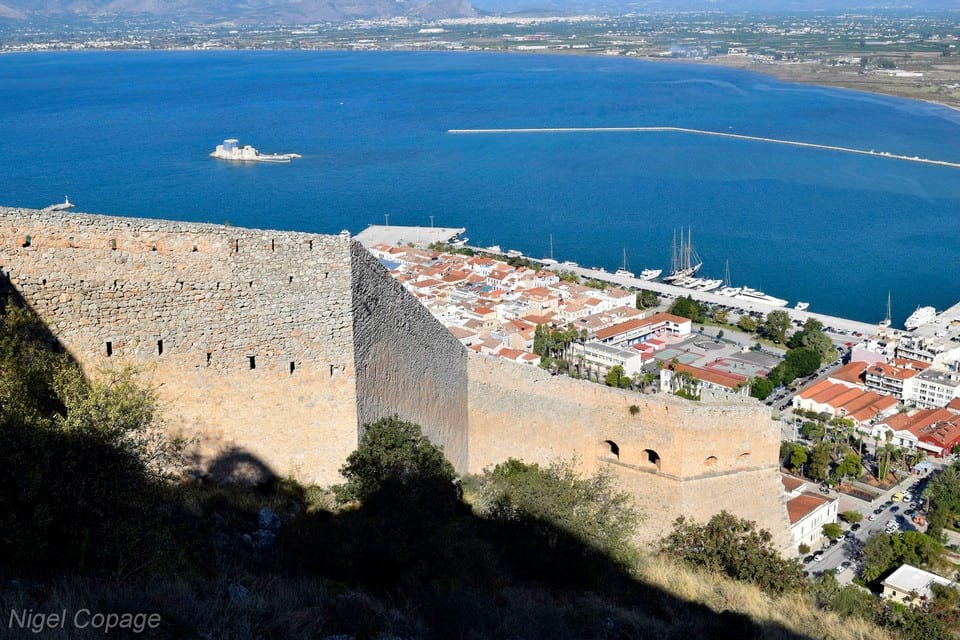 The view from Palamidi
The view from Palamidi
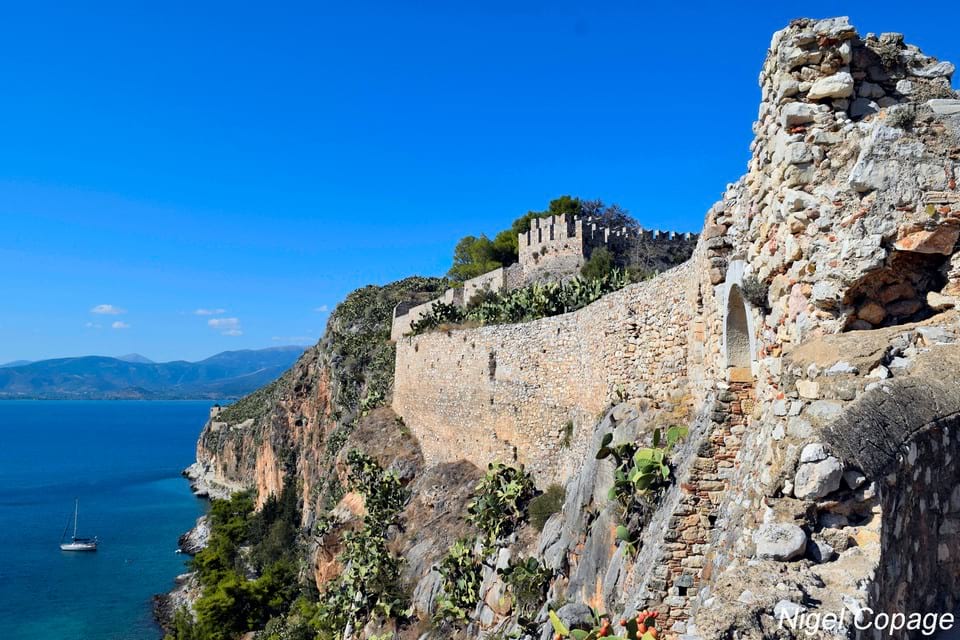 Acronauplia
Acronauplia
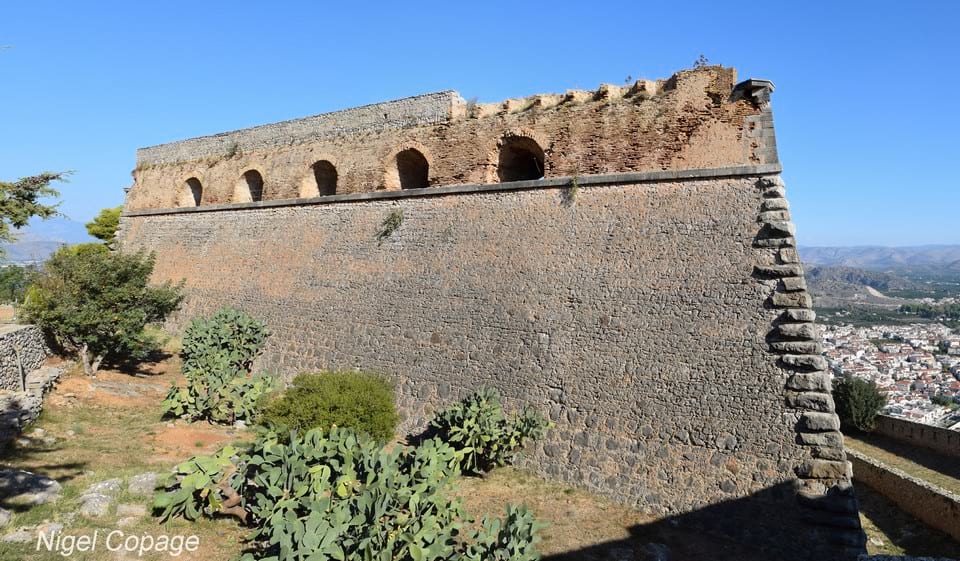 Palamidi
Palamidi
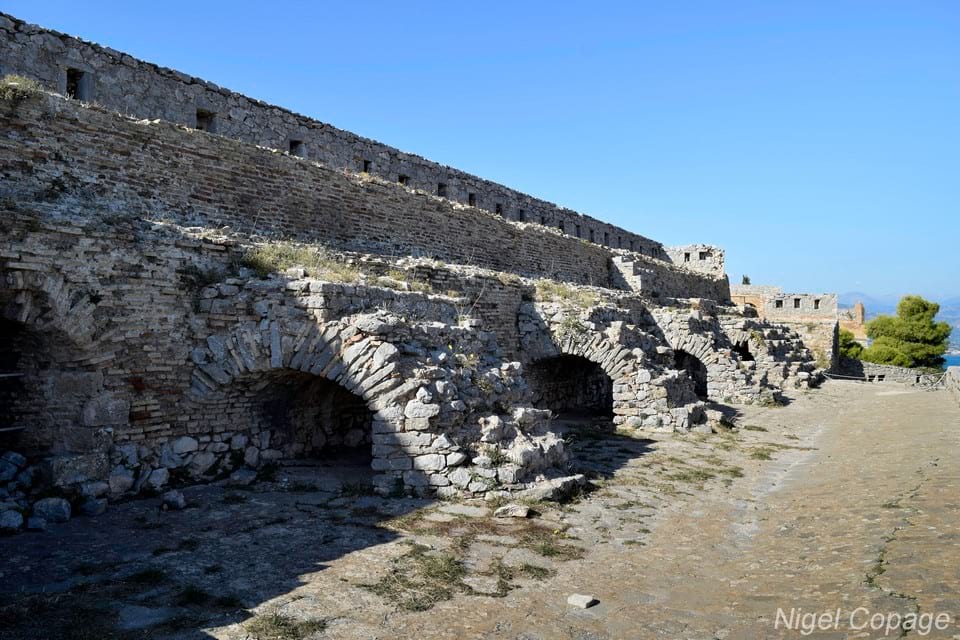 Palamidi
Palamidi
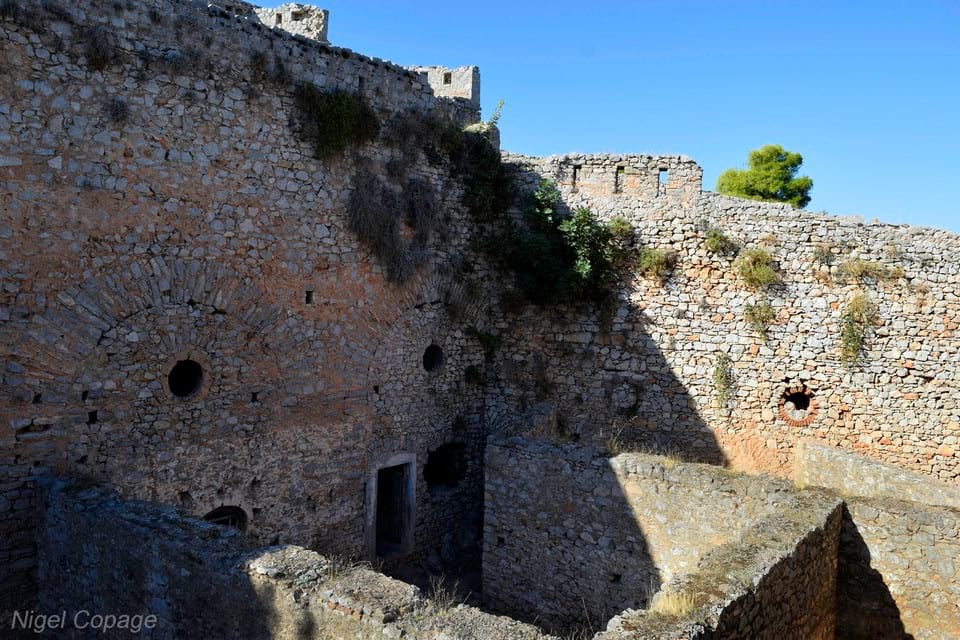 Palamidi
Palamidi
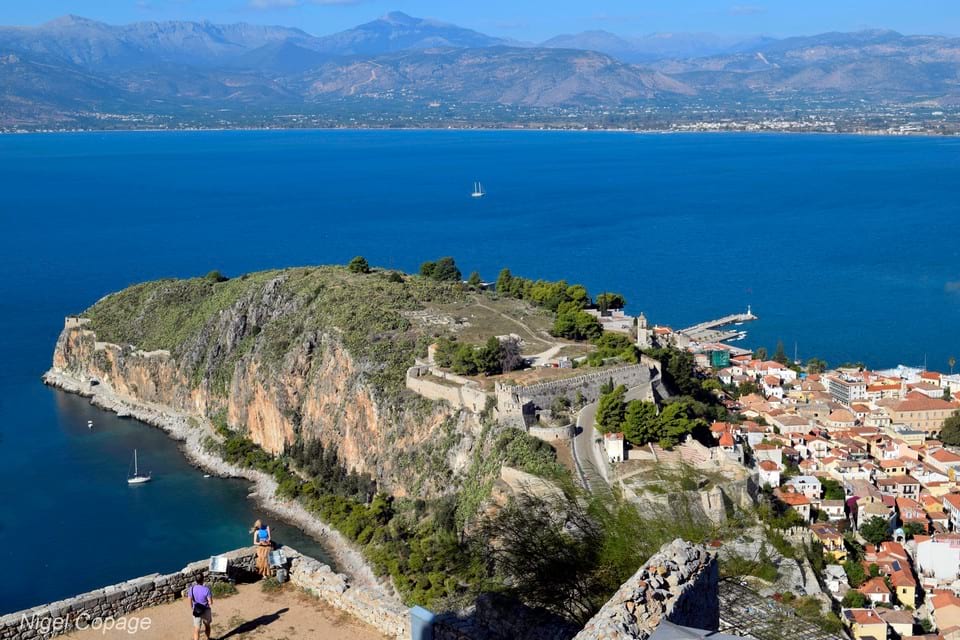 View of Acronauplia from Palamidi
View of Acronauplia from Palamidi
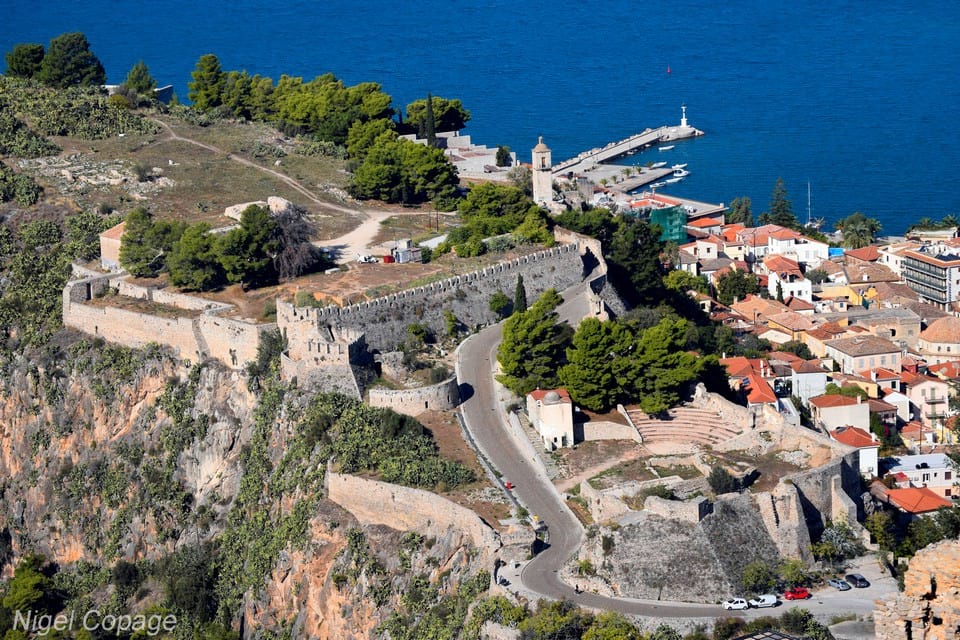 View of Acronauplia from Palamidi
View of Acronauplia from Palamidi
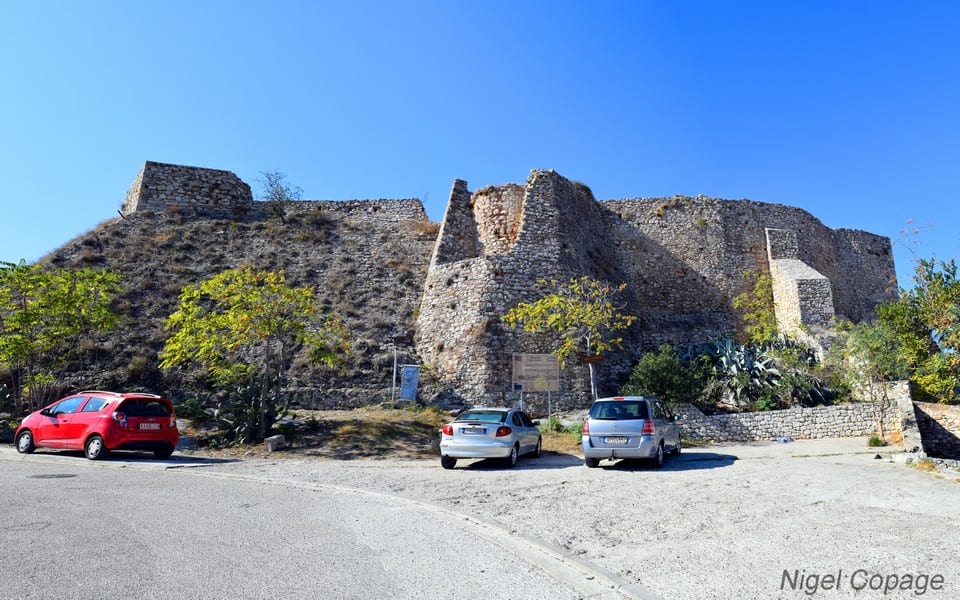 Acronauplia
Acronauplia
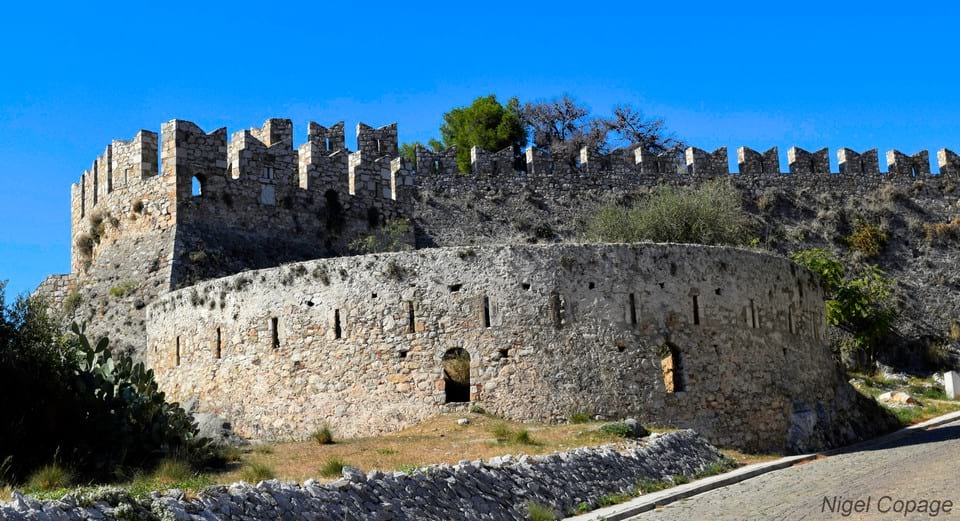 Acronauplia
Acronauplia